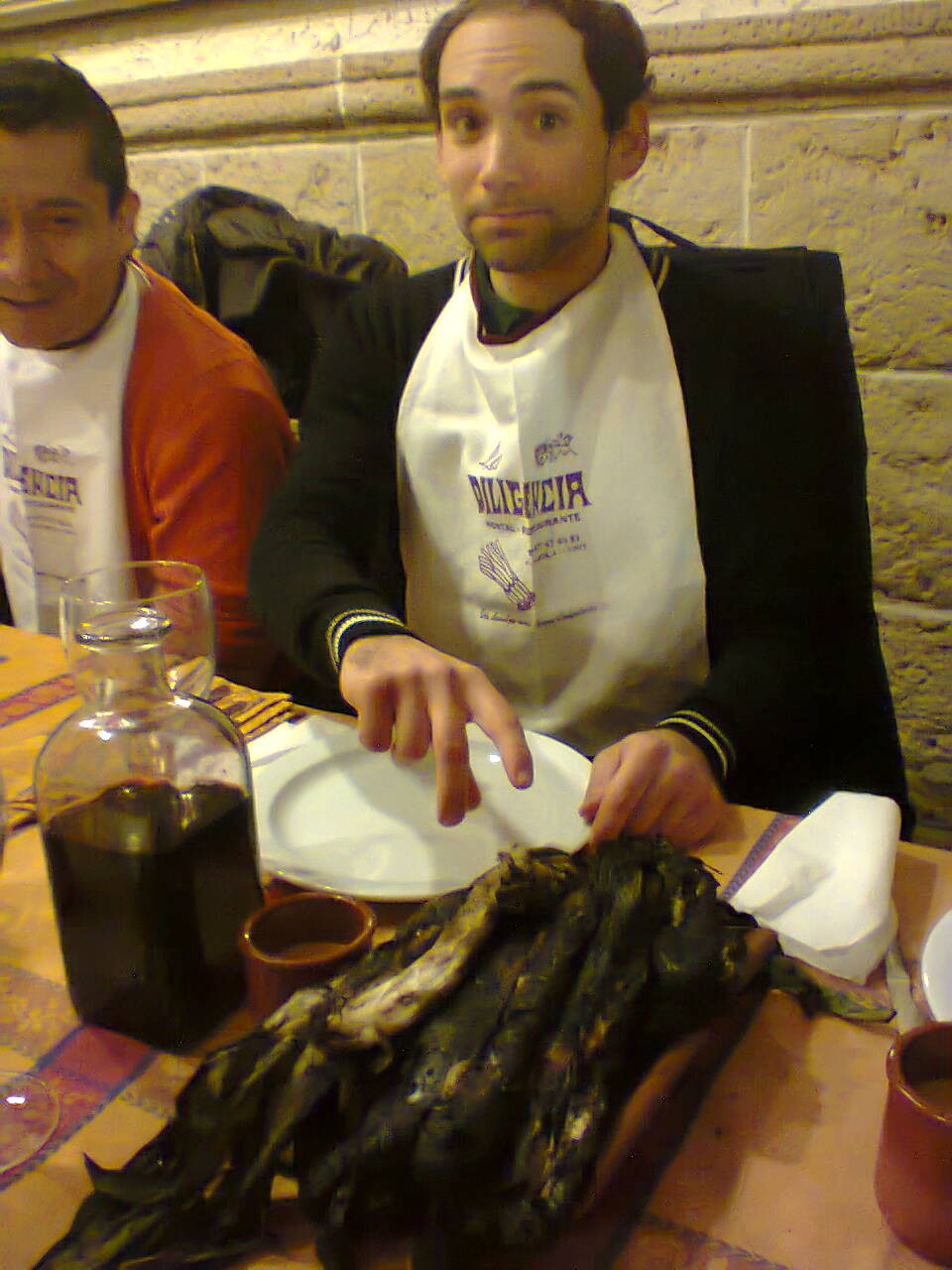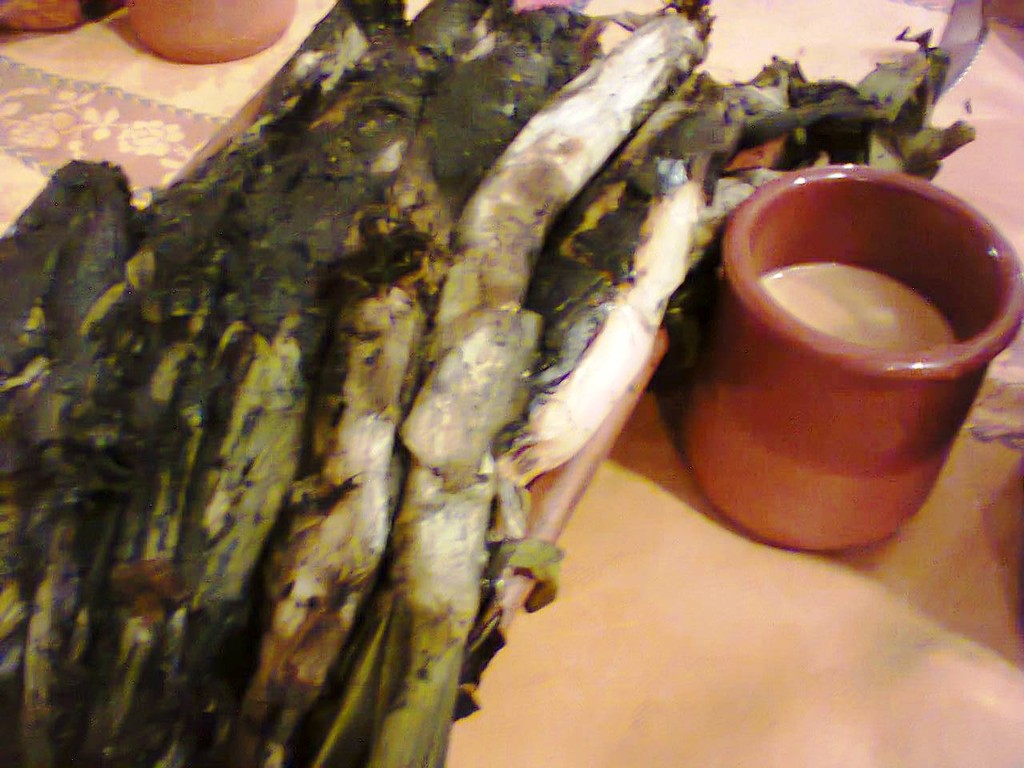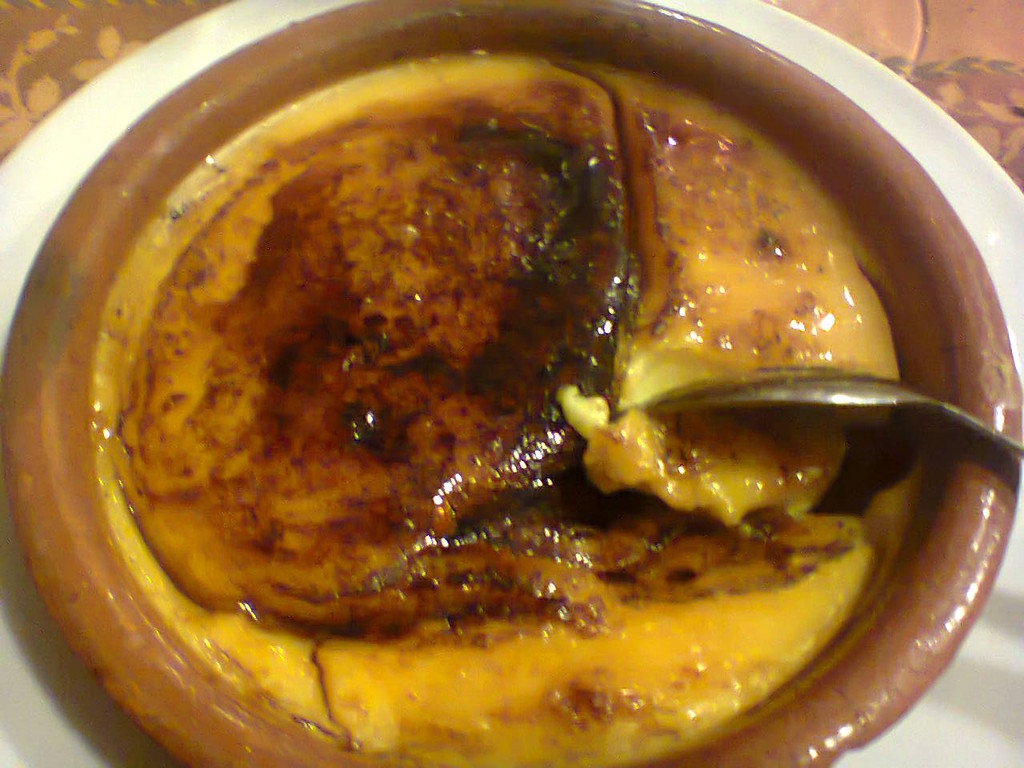Catalan Culture: Calçotada
When my colleagues invited me to a special lunch, based on a traditional food called calçots and therefore called calçotada, I accepted with enthusiasm, as I am usually keen on tasting new dishes, especially when they are typical of the place. Little did I know that the lunch would turn into a really unforgettable culinary experience, as I had to go through a sort of initiation and was finally admitted to the circle of people familiar with this Catalan tradition.

First of all, I had better explain what calçots are. In point of fact, they are neither more nor less than the apparently inoffensive spring onions, which are grown with great abundance and success here in Catalonia. But what can make of this vegetables a hard trial for beginners? Easily said. Calçots are usually eaten neither as a raw nor boiled vegetables, but rather they are brought to the table in a grilled version. What is wrong with it, you may think, a lot of vegetables are commonly eaten as grilled! Trouble is that calçots, or at least their outer part, are not only grilled, but almost burnt when they are served.

The challenge for the dining companions, therefore, is pulling out the inner part, which of course is the only still edible. To do so, you have to hold firmly one side of the burnt part of the calçot, peeling it off slowly and carefully until the inner part will finally appear. Provided you have succeeded in this difficult operation, you will then go on to dip it in a delicious sauce called romesco, and finally eat it. Of course, you will have to perform all these operations with your bare hands, which will obviously become dirty and blackish in a very short time. Needless to say, moreover, the shape of the calçots and the fact that they are eaten in a very peculiar way make sexual jokes and references quite common, originating a great quantity of laughs. Anyway, after struggling a bit at the beginning, I gradually became more comfortable with the calçots, finally managing to eat them almost easily.

Although, as I soon found out my initiation was not over yet: when the time of dessert finally came, the regular wine bottles which had been a pleasant complement for the lunch were replaced by a weird sort of ampoule containing cava. I was about to pouring some of it into my empty glass, when my colleague promptly stopped me, taking away my glass and bursting into the umpteenth laughter of the evening. Of course, glasses were not needed any more, because, as he explained to me, it was tradition to drink directly from the ---- . Of course, touching the nozzle with the lips was strictly forbidden, so it was a custom to pour the wine directly into your mouth from the ampoule, keeping it at a certain distance. Though quite afraid of either spilling the wine or chocking myself, I finally managed to sip a bit of cava, putting at last an end to the rituals I had to go through to be accepted into this sort of Catalan food confraternity. The Catalan cream which topped the lunch had fortunately no surprises in store, but it was really delicious and contributed to make more memorable, together with the unique atmosphere which reigned, my first experience with calçots.
Photo gallery
Want to have your own Erasmus blog?
If you are experiencing living abroad, you're an avid traveller or want to promote the city where you live... create your own blog and share your adventures!
I want to create my Erasmus blog! →






Comments (0 comments)